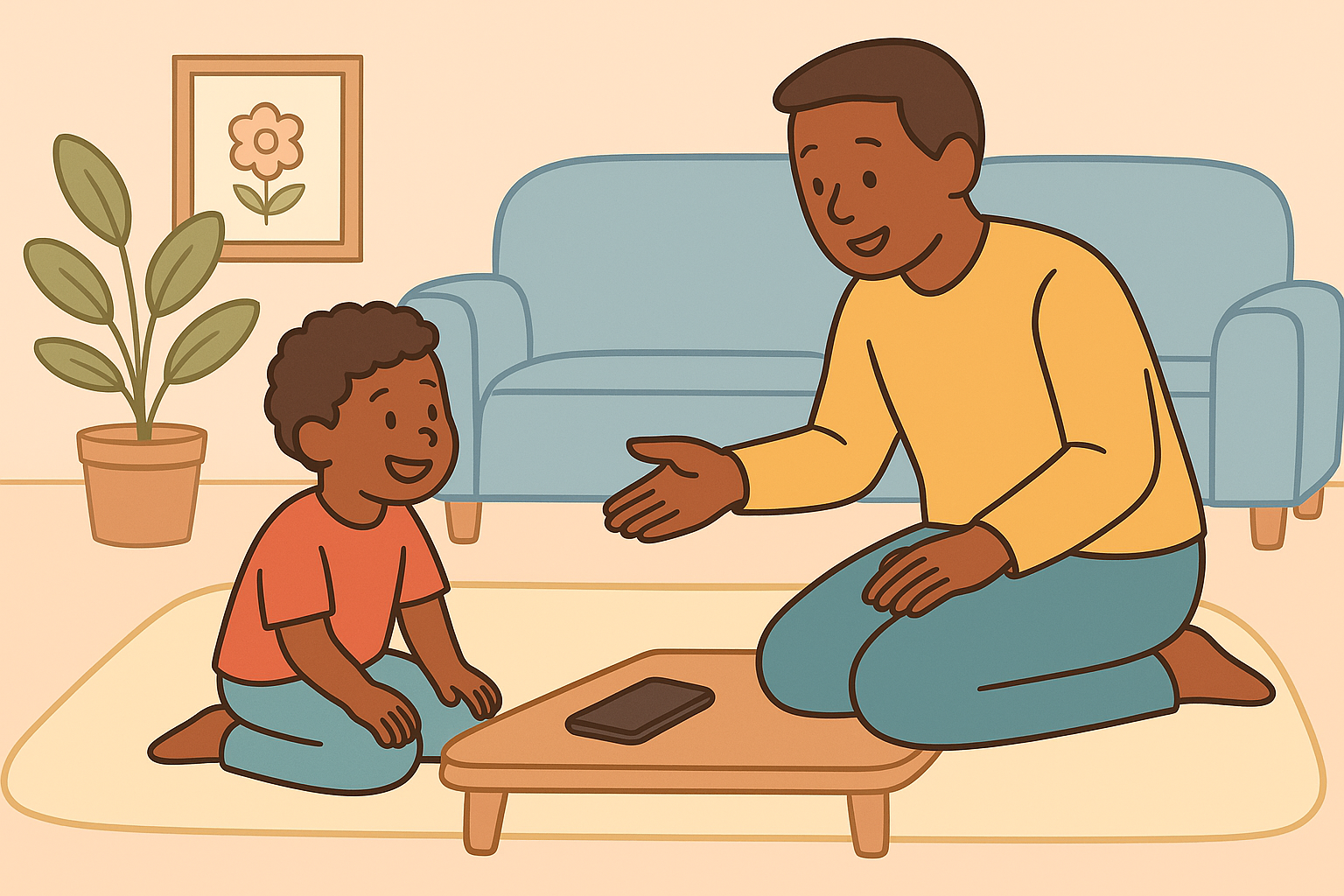Digital Role Modeling: How Your Own Habits Shape Theirs
Digital Role Modeling: How Your Own Habits Shape Theirs
Your child may not listen to every word you say — but they’re always watching what you do. When it comes to screens, your habits are the blueprint for theirs.
If you glance at your phone while they’re talking, they notice. If you pause to listen and put it down, they notice that too.
The truth is: the best way to raise mindful tech users is to be one.
Why Kids Mirror Your Digital Behavior
Children learn through imitation — it’s how empathy, speech, and self-regulation develop. In the digital age, that extends to how we use technology.
They see:
How you handle boredom (scrolling or being present)
How you respond to pings and notifications
How much time you spend with devices versus people
💡 Fuzzigram tip: Every tap teaches. Every pause teaches more.
See The Science of Screen Time: How Devices Affect Kids’ Brains.
The “Invisible” Messages Your Habits Send
Even without words, your digital behavior shapes their expectations.
💡 Fuzzigram tip: Modeling is less about perfection, more about awareness.
See Tech Boundaries That Stick: Setting Limits Without Meltdowns.
Step 1: Reflect Without Guilt
Every parent struggles with digital balance — especially when work, news, and communication all live in one device. Instead of guilt, use awareness as a starting point.
Ask yourself:
When do I reach for my phone most?
What do my kids see me doing online?
Do I show frustration or joy when using screens?
Self-reflection leads to self-correction.
Step 2: Share Your Intentions
Let your kids hear you talk about your tech use:
“I’m using my phone to text Grandma.”
“I’m putting this away so I can focus on you.”
Transparency helps children understand that not all screen time is the same — and that mindful use is a choice.
💡 Fuzzigram tip: Narrate your decisions; it normalizes balance.
Step 3: Create “Together, Not Parallel” Tech Moments
If you’re online, include them in the experience when possible:
Look up a recipe together
Explore Google Earth
Watch an educational video and talk about it
This turns solo scrolling into shared learning.
See The Hidden Power of Co-Viewing: Watching Together Builds Connection.
Step 4: Define Device-Free Zones
Kids learn consistency through environment. Establish clear zones for connection — and stick to them as a family.
Examples:
Dinner table
Bedrooms
Family car rides
💡 Fuzzigram tip: Shared tech rules keep everyone accountable — not just kids.
See Creating a Screen-Free Morning Routine for Focus and Connection.
Step 5: Model Mindful Transitions
What do your kids see when you put your phone down? Do you sigh, glance back, or move on easily?
Show that it’s possible to end screen time peacefully — it helps them regulate their own emotions when the same boundary applies.
See How to Recognize When Screen Time Becomes Overstimulation.
Step 6: Celebrate Offline Joy
Talk openly about moments when tech isn’t part of your day.
“I loved our walk earlier — no phones, just fresh air.”
“That board game was more fun than watching a show.”
When you highlight real-world pleasure, you reinforce the value of presence.
Helpful Links
Children don’t need perfect parents — they need present ones. Your digital habits are the quiet lessons that shape theirs for life.
When you pause, they learn focus. When you listen, they learn connection. When you unplug, they learn peace.
Because in a world full of screens, the most powerful role model is still a human one.
This content is for educational purposes and is not a substitute for professional medical or psychological advice.
Popular Parenting Articles



